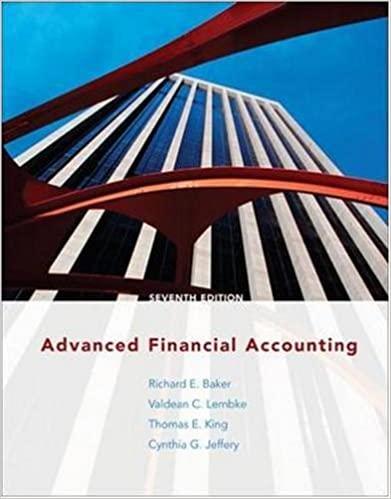Accounting for leases has been a problematical issue for some years. In 1984, SSAP 21, Leases
Question:
Accounting for leases has been a problematical issue for some years. In 1984, SSAP 21, –
Leases and hire purchase contracts was issued. This Accounting Standard requires that lessee companies capitalise leased assets in certain circumstances. The Standard classifies leases as either finance leases or operating leases, depending on the terms of the lease. In December 1999, the Accounting Standards Board (ASB) published a Discussion Paper – Leases:
Implementation of a New Approach.
Under the recommended approach, at the beginning of a lease the lessee would recognise an asset and a liability equivalent to the fair value of the rights and obligations that are conveyed by the lease (usually the present value of the minimum payments required by the lease); thereafter, the accounting for the leased asset and liability would follow the normal requirements for accounting for fixed assets and debt.
Expo plc prepares financial statements to 30 September each year. On 1 October 2001, Expo plc leased a fleet of cars for its sales force. There were 50 identical cars in the fleet.
Relevant details for each car are as follows:
● Fair value on 1 October 2001 was £10000.
● Lease term is 2 years.
● Estimated residual value of car on 30 September 2003 is £3000.
● Lease rentals are £9000 in total – a payment of £4000 on 1 October 2001 plus two payments of £2500 on 30 September 2002 and 30 September 2003.
● The payments of £2500 increase by £1 for every mile travelled in excess of an agreed annual maximum of 50000 miles per car.
● The lessor is responsible for repair and maintenance of the fleet.
Required
(a) Explain the factors that led to the issue of the Discussion Paper in 1999. (6 marks)
(b) Demonstrate the effect of the leasing arrangement on the profit and loss account of Expo plc for the year ended 30 September 2002 and its balance sheet at 30 September 2002,
● assuming Expo plc follows SSAP 21; (7 marks)
● assuming Expo plc follows the proposals outlined in the Discussion Paper.
(7 marks)
Note: The discount rate to be used where relevant is 10%. In requirement (b), you should explain exactly where in the profit and loss account and balance sheet the relevant amounts will be reported.
CIMA, Financial Reporting – UK Accounting Standards, November 2002 (20 marks)
Step by Step Answer:

Advanced Financial Accounting
ISBN: 9780073526744
7th Edition
Authors: Richard Baker, Valdean Lembke, Thomas King, Cynthia Jeffrey





